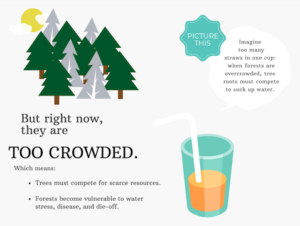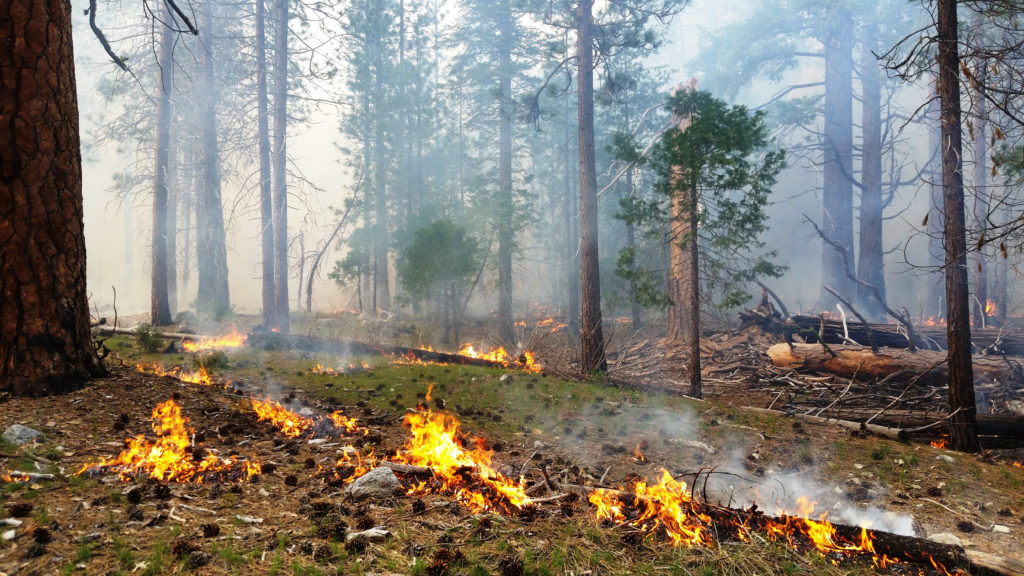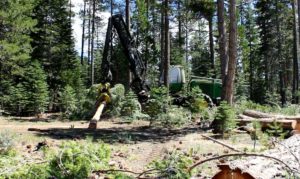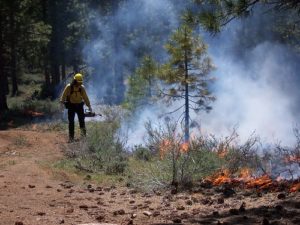By Eden Marish Roehr, UC Davis, CECS Summer 2020 Intern
When you picture overcrowding in California, I’m guessing you might envision traffic jams, rising home prices, lengthy grocery store checkout lines — probably not the lush forests of the Sierra Nevada. But these forests are also experiencing an overcrowding problem. Since the arrival of European settlers in the 19th century, fire suppression policies have facilitated the overgrowth of Sierran forests. When forests become too crowded, trees must compete for resources like nutrients and water. Moreover, because water-stressed trees make excellent hosts for deadly pests like bark beetles, trees in overcrowded forests are significantly more vulnerable to widespread die-off: since 2010, over 150 million trees in the Sierra Nevada have died due to prolonged drought.[i] Agriculture Secretary Tom Vilsack calls this scale of die-off “unprecedented,” a title which led former Governor Jerry Brown to declare a state of emergency in 2015.[ii]
This situation becomes more urgent when we consider the effects of climate change. While the consequences of a changing climate are not entirely predictable, scientific consensus tells us with relative certainty that California can expect more of two things: drought and wildfire. Warmer temperatures will lengthen our fire seasons, and drought compounds water stress on already-parched trees, drying out our forests and making them more susceptible to catastrophic wildfires. Ultimately, the combined effects of climate change and forest crowding compromise California’s water and power supply, diminish its air quality, and endanger beloved outdoor oases nestled in the Sierras from Tahoe to Yosemite.

This might seem a bleak prognosis, but the good news is that there are ways we can help. To make our forests more climate resilient, we must first make them less crowded. Experts recommend we accomplish this via two main strategies: mechanical thinning and prescribed fire.
Mechanical thinning means removing excess trees and plant material that could fuel large wildfires, either by machine or by hand. Thinning directly reduces forest density, which eases competition for resources among trees and also reduces the risk of tree die-off.[iii] And while it might seem counterintuitive, prescribed fire is also incredibly beneficial to forest ecosystems. Supervised by land managers, controlled burns help to clear out small trees and underbrush in order to decrease wildfire risk and make room for older trees to grow larger. These frequent, low severity fires also stimulate essential ecological processes like seed germination and plant regeneration that work to keep Sierran forests healthy.[iv] At CECS, we are creating tools that locate and prioritize areas most in need of these treatments. We’re also working to quantify the multiple benefits of forest treatments to incentivize funding for forest management projects.
|
|
|
For centuries, Sierran forests have gifted us with food, water, and shelter. To safeguard these vital ecosystems, we must acknowledge and embrace our role in helping them adapt to a warmer future. We know how to help these forests. Management practices like prescribed burns and mechanical thinning can help protect forests in the Sierra Nevada, and ensure their survival in a changing climate. What we need now is more resources, more funding, and swift action. For so long, these forests have taken care of us. It’s time we return the favor.
Sources:
[i] https://www.smithsonianmag.com/smart-news/why-californias-drought-killed-almost-150-million-trees-180972591/
[ii] https://www.fs.usda.gov/news/releases/forest-service-survey-finds-record-66-million-dead-trees-southern-sierra-nevada
[iii] Forest Climate Action Team. 2018. California Forest Carbon Plan: Managing Our Forest Landscapes in a Changing Climate.
[iv] University of California. 2015. California Naturalist Series: Natural History of the Sierra Nevada.
This content was developed as part of the CECS Summer 2020 Science Communication Internship.



